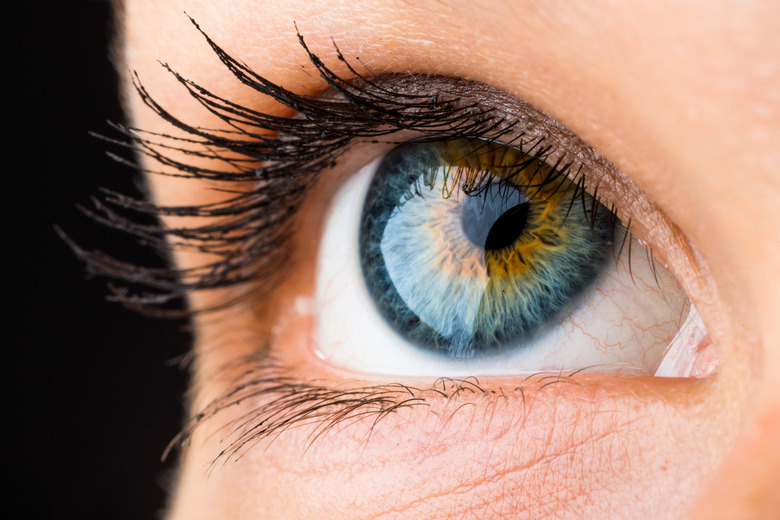Comparison Of The Human Eye To A Camera
The camera and the human eye have much more in common than just conceptual philosophy — the eye captures images similar to the way the camera does. The anatomy of the camera bears more similarities to a biological eyeball than many would imagine, including the lens-like cornea and the film-like retina. Similarities like these give the camera the appearance of a robotic eye. However, though there are many similarities between cameras and eyes, they are by no means identical.
Cornea and Lens
Cornea and Lens
The cornea is the "cap" of the eye. This transparent (like clear jelly) structure sits to the front of the eye and has a spherical curvature. The lens of a camera is also transparent (glass) and sits at the front of the body. Like the cornea, the lens also maintains a spherical curvature. The corneal and lens curvature allows for the eye and camera to view, though not in focus, a limited area to both the right and the left. That is, without the curve, the eye and camera would see only what is directly in front of it.
Iris and Aperture
Iris and Aperture
The aperture is to the camera as the iris is to the eye, and this reveals one of many similarities between cameras vs. eyes. The aperture size refers to how much light is let into the camera and will ultimately hit the sensor or film. As with the human eye, when the iris contracts itself, the pupil becomes smaller and the eye takes in less light. When the iris widens in darker situations, the pupil becomes larger, so it can take in more light. The same effect happens with the aperture; larger (lower) aperture values let in more light than a small (higher) aperture value. The lens opening is the pupil; the smaller the opening, the less light let in.
Focus in Eyes and Cameras
Focus in Eyes and Cameras
Both the eye and camera have the ability to focus on one single object and blur the rest, whether in the foreground (shallow depth of field) or off at a distance. Likewise, the eye can focus on a larger image, just as a camera (greater depth of field) can focus and capture a large scape.
Scope and Field of View
Scope and Field of View
As the eye, the camera has a limited scope to take in what is around it. The curvature of the eye and the lens allow for both to take in what is not directly in front of it. However, the eye can only take in a fixed scope, while a camera's scope can be changed by the focal length of different types of lenses.
Retina and Film
Retina and Film
The retina sits at the back of the eye and collects the light reflected from the surrounding environment to form the image. The same task in the camera is performed either by film or sensors in digital cameras. This process underpins both how cameras work and how eyes work.
Cite This Article
MLA
Ferland, Mallory. "Comparison Of The Human Eye To A Camera" sciencing.com, https://www.sciencing.com/comparison-human-eye-camera-6305474/. 10 April 2018.
APA
Ferland, Mallory. (2018, April 10). Comparison Of The Human Eye To A Camera. sciencing.com. Retrieved from https://www.sciencing.com/comparison-human-eye-camera-6305474/
Chicago
Ferland, Mallory. Comparison Of The Human Eye To A Camera last modified March 24, 2022. https://www.sciencing.com/comparison-human-eye-camera-6305474/
